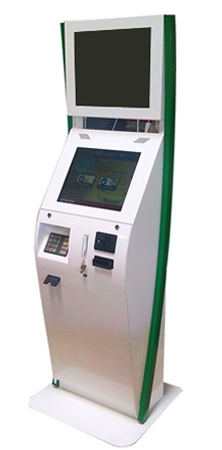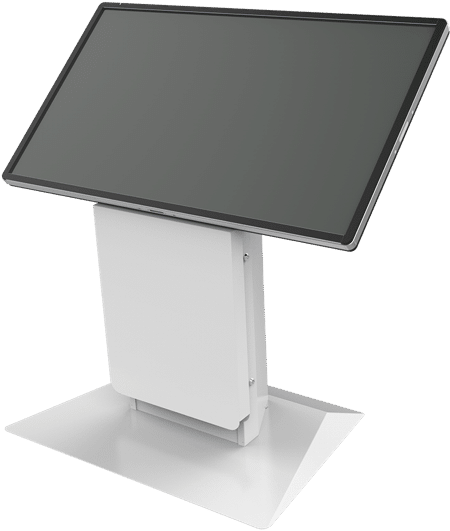In businesses everywhere, customers are paying for goods or services by inserting chip cards into cutting-edge smart terminals instead of swiping their mag-stripe-only predecessors through the familiar side slot. Chip card technology, or EMV, is a state-of-the-art payment standard that connects payment cards at the point of service with an embedded chip microprocessor instead of a magnetic stripe. EMV computer chips validate the authenticity of the card and include a one-time-use security code in every transaction, making chip payment data virtually impossible to use for counterfeit card fraud.

Olea Kiosks is just one manufacturer that is able to employ this payment kiosk technology in all its transactional kiosks to create user-friendly and efficient payment experiences that allow customers to satisfy their bills or complete their payments more securely, while allowing deployers to reduce or redeploy their customer service staff.
Myth 1: Migrating to EMV will not provide any benefits
The truth: EMV smart terminals are as efficient as swipe payment methods, with the added benefit of increased security against fraud.
According to one study, credit and debit card fraud reports have been tripling every year for the last few years with an average of $399 in fraudulent charges per case. EMV chip cards have proven to be more secure, while lowering the cost of PCI compliance and minimizing downtime when system upgrades are required. Any business that has been hit by multiple credit/debit card fraud instances understands the importance of using the most secure technology to limit exposure to fraud.
Digital kiosks or smart terminals that use EMV also help businesses save money and generate more revenue. One study found that a business earning around $5 million a year that invests a one-time cost of approximately $300,000 in EMV can see $38,000 in monthly benefits in the first year alone, generating positive ROI in the tenth month after the initial investment.
Forward-thinking businesses can even add a new revenue stream by taking advantage of credit card company payment incentives for using EMV technologies. Payment brands like Visa, MasterCard and American Express offer cost-saving incentives to business owners switching to EMV, such as PCI audit relief and protection from penalties and fines that result from a data breach.
Myth 2: Avoid EMV long enough and it will go away
The truth: The U.S. EMV migration is happening now, and it’s happening because compliance is mandatory. Today, more than half of all U.S. payment cards (approximately 600 million) are chip cards, and one million merchant locations accept EMV chip transactions.
The shift to EMV technologies was largely driven by the goal to reduce fraud, but the technology also has the added benefit of providing global interoperability. The transition has helped U.S. businesses and consumers conduct safer financial transactions with countries abroad that already employ EMV; there are 4.8 billion chip payment cards in use worldwide, and studies show that in the last year, 97 percent of POS transactions in Europe were chip transactions. European Union credit card fraud has dropped 80 percent as a result, suggesting that U.S. businesses can expect an equally dramatic reduction in fraud on a long-term basis.
Get Olea’s Free Intelligence Report!
Myth 3: It’s best to just jump to mobile payments/mobile wallets
The truth: While mobile payments systems such as Apple Pay are growing quickly, there are many users that will always feel more comfortable using a payment tool they can touch, such as a credit card. In addition, the proliferation of chip cards on a global level suggests that cards with EMV technology will continue to be the predominant payment method for the foreseeable future.
Furthermore, credit card companies intend to continue to expand EMV implementation, as opposed to phasing it out in favor of NFC technology. By the end of 2016, the number of EMV cards in the U.S. will rise another 33 percent over 2015 numbers.
In regards to its staying power, the good news for business owners is that EMV technology can be deployed to the same digital kiosk or smart terminal that processes contactless cards, mobile payments, and traditional magnetic swipe cards.
Contact Olea Today
EMV technology and kiosks with smart payment terminals are protecting businesses from credit card fraud while offering payment flexibility. Contact Olea Kiosks today to find out how our bill-pay and other transactional kiosks can help your business get in compliance while guarding its bottom line.

